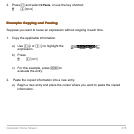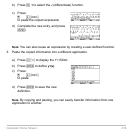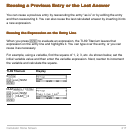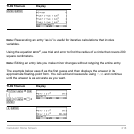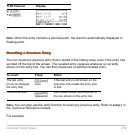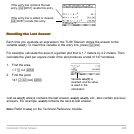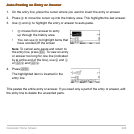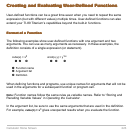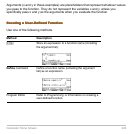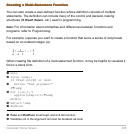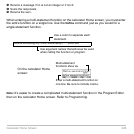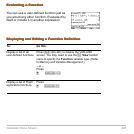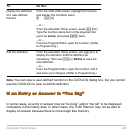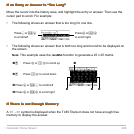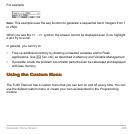
Calculator Home Screen 223
Creating and Evaluating User-Defined Functions
Creating and Evaluating User-Defined FunctionsCreating and Evaluating User-Defined Functions
Creating and Evaluating User-Defined Functions
User-defined functions can be a great time-saver when you need to repeat the same
expression (but with different values) multiple times. User-defined functions can also
extend your TI-89 Titanium’s capabilities beyond the built-in functions.
Format of a Function
Format of a FunctionFormat of a Function
Format of a Function
The following examples show user-defined functions with one argument and two
arguments. You can use as many arguments as necessary. In these examples, the
definition consists of a single expression (or statement).
When defining functions and programs, use unique names for arguments that will not be
used in the arguments for a subsequent function or program call.
Note: Function names follow the same rules as variable names. Refer to “Storing and
Recalling Variable Values” in Operating the Calculator.
In the argument list, be sure to use the same arguments that are used in the definition.
For example,
cube(n) = x
3
gives unexpected results when you evaluate the function.
cube(x) = x
3
ÊË Ì
Ê
Function name
Ë Argument list
Ì Definition
xroot(x,y) = y
1/x
ÊË Ì



